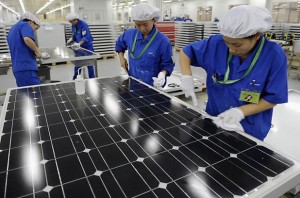In terms of scale and speed, China’s economic transformation has no historical precedent: since initiating market reforms in 1978 China has shifted from a centrally planned economy to a market based one. In 1978 China was one of the poorest country’s in the world with its GDP only one-fortieth of America’s and only 16% of its population living above the poverty line. Since then it has demonstrated a stunning economic reversal which many deem as the “Chinese economic miracle”: while in 1978 only 16% of its population lived above the poverty line, by 2005 only 16% lived below it; while in 1978 its GDP was only one-fortieth of America’s, with an astounding rate of 8% real per capita GDP growth annually, China’s GDP is now almost one-fifth of the U.S. level. This rapid and sustained improvement in average living standard has occurred in a country with more than 20 percent of the world’s population (population of 1.3 billion people), thus causing China to be the world’s second-largest economy as well as lifting 500 million people out of poverty.
However, all industrial nations one day hit an environmental turning point, an event that galvanizes the population to realize the ecological consequences of rapid growth. In America in 1969, that event occurred when the Cuyahoga river in Ohio, thick with pollutants, caught fire. America’s Environmental Protection Agency was founded the next year. The rank smog in Beijing could join the ranks of these environmental turning points. A swathe of warm air has settled over the Chinese capital like a duvet and trapped beneath it pollution from the region’s 200 coal-fired power plants. The concentration of pollutant particles hit 900 parts per million—40 times the level the World Health Organization deems safe.
There is no doubt that China’s economic reform has profoundly impacted the environment. The exponentially expanding economic activities have put a mounting pressure on natural resources and the environment. This in turn, poses a serious threat to China’s economic growth, costing the country about 9% of its gross national income, according to most recent figures from the World Bank. China’s Ministry of Environmental Protection estimates the cost of pollution at around 1.5 trillion RMB, or roughly 3.5 percent of GDP in 2010.
While it seems that a growing economy can do nothing but degrade the environment, many economists optimistically believe in technological progress and an environmental solution coming from the market. As the environment continues to deteriorate, the price for environmental goods and services will increase. A well-functioning market can provide a mechanism for consumers and producers to modify green technology for conservation and innovation. This will thus build technology that has a positive impact on resource conservation and pollution abatement, offsetting the consequences of a large population and their growing income. Thus China does not need to curb its economic growth to save its environment, rather economic openness enables China to access cleaner technologies at lower costs, which will help achieve economic growth with less adverse environmental impacts.
To face its growing pollution, China has become a global leader in the renewable energy sector. China is the leading manufacturer of solar panels in the world exporting most of its solar panels to foreign countries. The country also installed the largest number of wind
turbines in the world in 2009, expanding its wind capacity by 13 GW. By contrast, the U.S. expanded its wind capacity by 10 GW in the same year. That year China invested $34.6 billion in green technology in contrast to the U.S. investing $18.6 billion.
Investors in green technology are noticing China’s commitment to green technology and have invested $65 billion into Chinese wind farms, solar panel arrays and other clean energy projects in 2012, a 20% increase over the year prior, according to a report released by Pew Charitable Trusts and Bloomberg New Energy Finance. The numbers reflect only private investments and do not include government subsidies. China became the world’s top destination for green energy investments in 2012. “If there’s any country in the world that can turn it around, it’s China” says Jenifer Turner, director of the China Environment Forum at the Woodrow Wilson Center.
